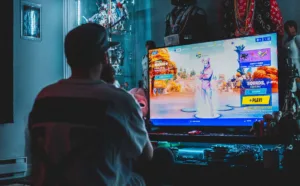Expensive, high-end smart products risk losing features and functionality or posing a security risk after as little as two years because manufacturers are failing to provide vital tech updates, Which? has found.
Research from the consumer champion found that appliances like washing machines or dishwashers, which might be expected to last more than a decade, could quickly stop working as marketed, or pose hacking risks as ‘smart features’ stop working as intended.
Which? looked at popular smart TVs, dishwashers, washing machines, smartphones, inkjet printers, smartwatches and fitness trackers and found that hardly any brands even came close to matching their expected lifespan with their smart update policies. Others failed to respond to Which? at all when they were asked to clarify the length of support.
Which? approached 119 brands about hundreds of smart device products, across 20 different categories, and, as of November 2022, only half (49%) had replied with clear information on support periods.
A product being ‘smart’ means that it is internet-connected – which opens up an array of sophisticated features that can be helpful for consumers. However, they can be much more expensive than traditional versions.
For example, smart dishwashers cost almost £300 ($3670) more upfront, on average, than traditional ones (£746 versus £455; $915 and $560). Smart models offer remote control using an app – so people can start, pause and stop their washes using their smartphone, tablet, Alexa or Google Assistant. The app can determine the most suitable program for dishes and choose wash cycles that are water and energy efficient.
However, these smart features are jeopardised when the product loses software support from the manufacturer, and the risk of online hacking also increases. LG dishwashers could lose support just two years after launch despite the estimated lifetime of dishwashers being 13 years.
LG’s smart TVs and washing machines similarly only have guaranteed support for just two years after launch. That is despite the estimated lifetimes for TVs and washing machines being nearly seven years and 11 years respectively. LG told Which? that its TVs might get up to five years of support for critical security vulnerabilities.
Which? also found that Sony only offers guaranteed support of its smart TVs for two years from launch, while for Samsung’s smart TVs it is three years. HP guarantees support for its smart printers for just three years, even though the estimated lifetime for inkjet printers is 13 years.
Big-name brands, including AEG, Apple, Epson, Hoover and Whirlpool, failed to respond with guaranteed update support periods. If they fail to provide clarity to Which?, there appears to be little hope for consumers wanting these assurances.
When Which? surveyed 1,051 Which? members in October 2022, around nine in 10 said that security updates were an important factor when they bought a smart product. Yet, across nine key smart product categories, an average of two-thirds of people had no idea how long their product would be supported for when they bought it.
Some companies such as Hisense, which supports smart TVs for 10 years, and Miele, which supports smart dishwashers and washing machines for 10 years, show that it is possible to offer guaranteed support for products for longer periods of time.
The recently passed Product Security and Telecommunications Infrastructure (PSTI) Act is an important first step in giving the government the power to require manufacturers to be upfront about how long their products will be supported with updates.
However, Which? believes industry must not simply wait for the commencement of new laws to improve transparency – and that manufacturers should also proactively extend the minimum lengths of time they support smart products. If they do not step up, the government should build on the action it has already taken and mandate that manufacturers set longer minimum support periods.
Rocio Concha, Which? Director of Policy and Advocacy, said:
It’s unfair for manufacturers to sell expensive products that should last for many years and then abandon them. This means the product could lose the features that justified the hefty price tag and potentially create a security risk or add to the electrical waste mountain if it has to be replaced.
Manufacturers must up their game and provide vital tech updates for their smart products for longer, otherwise the government should consider further intervention in this area, including specifying a minimum number of years that these products have to be supported for.

